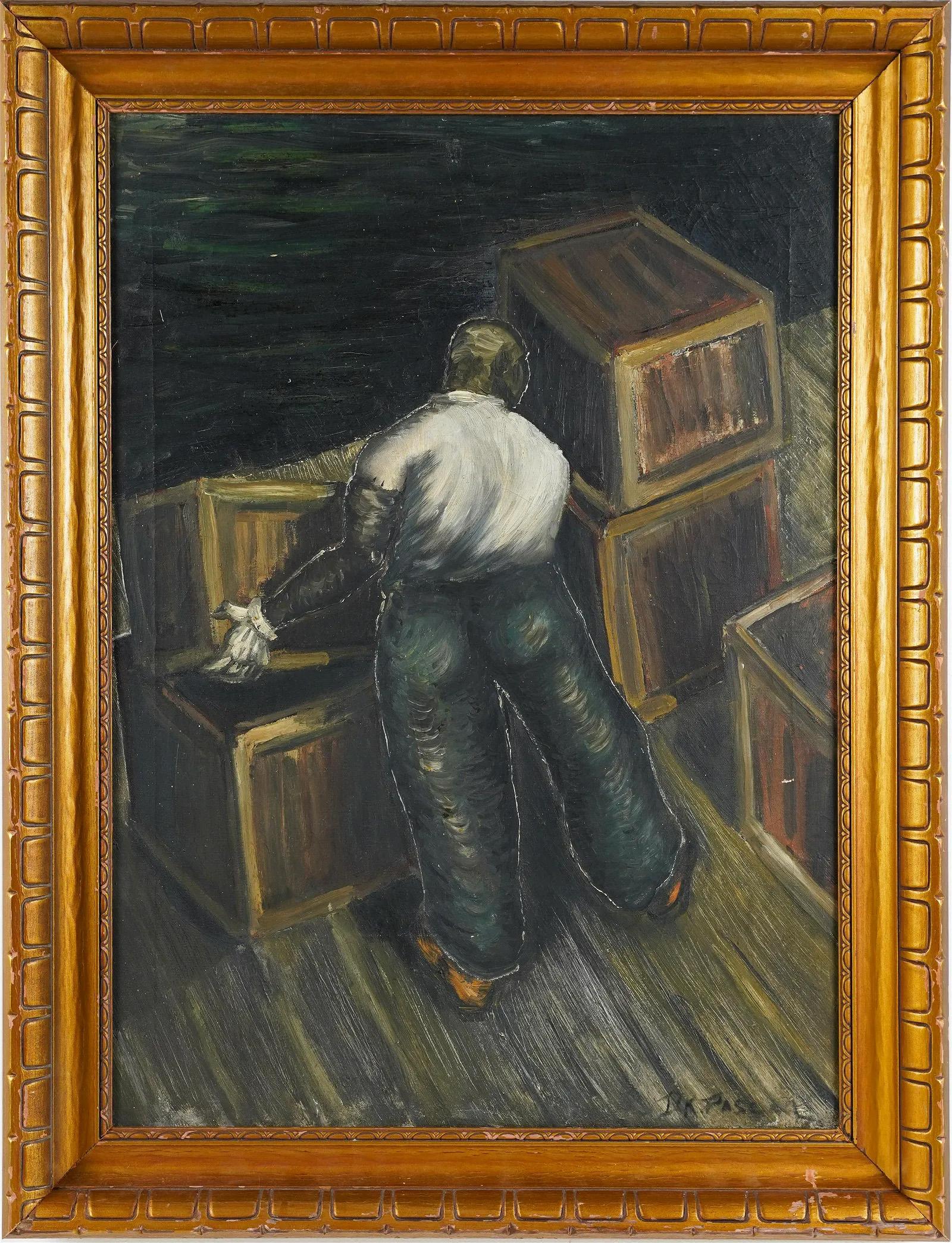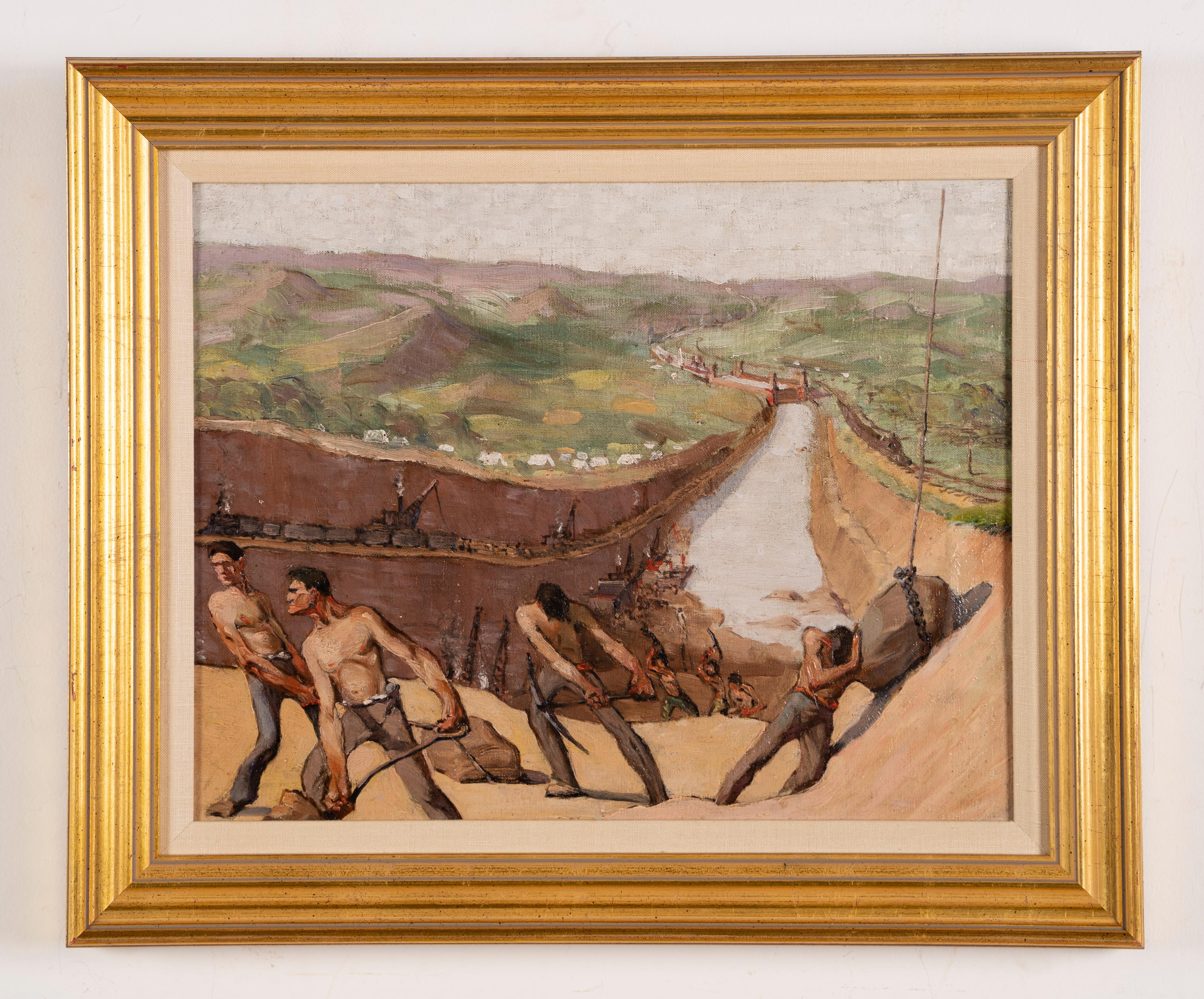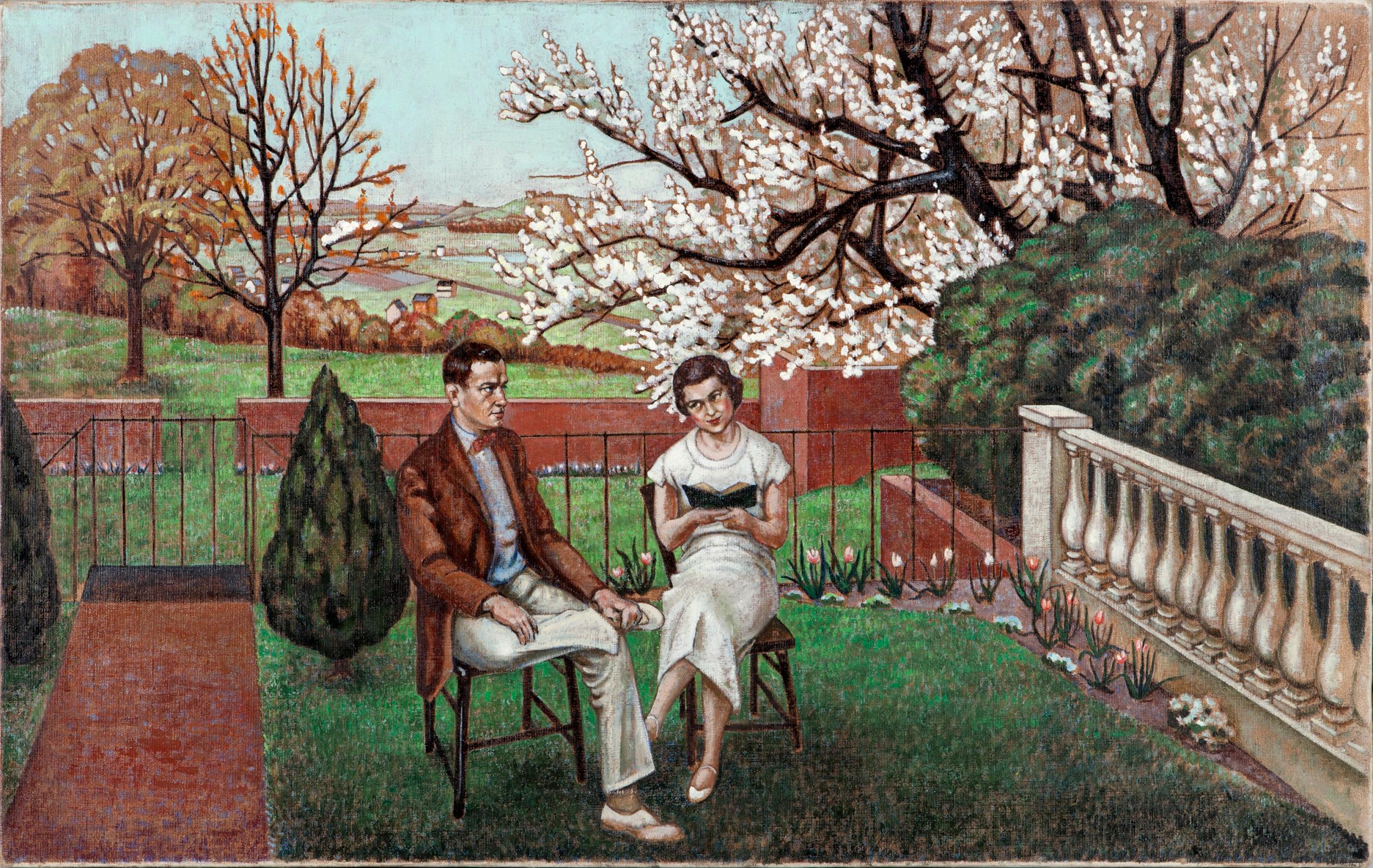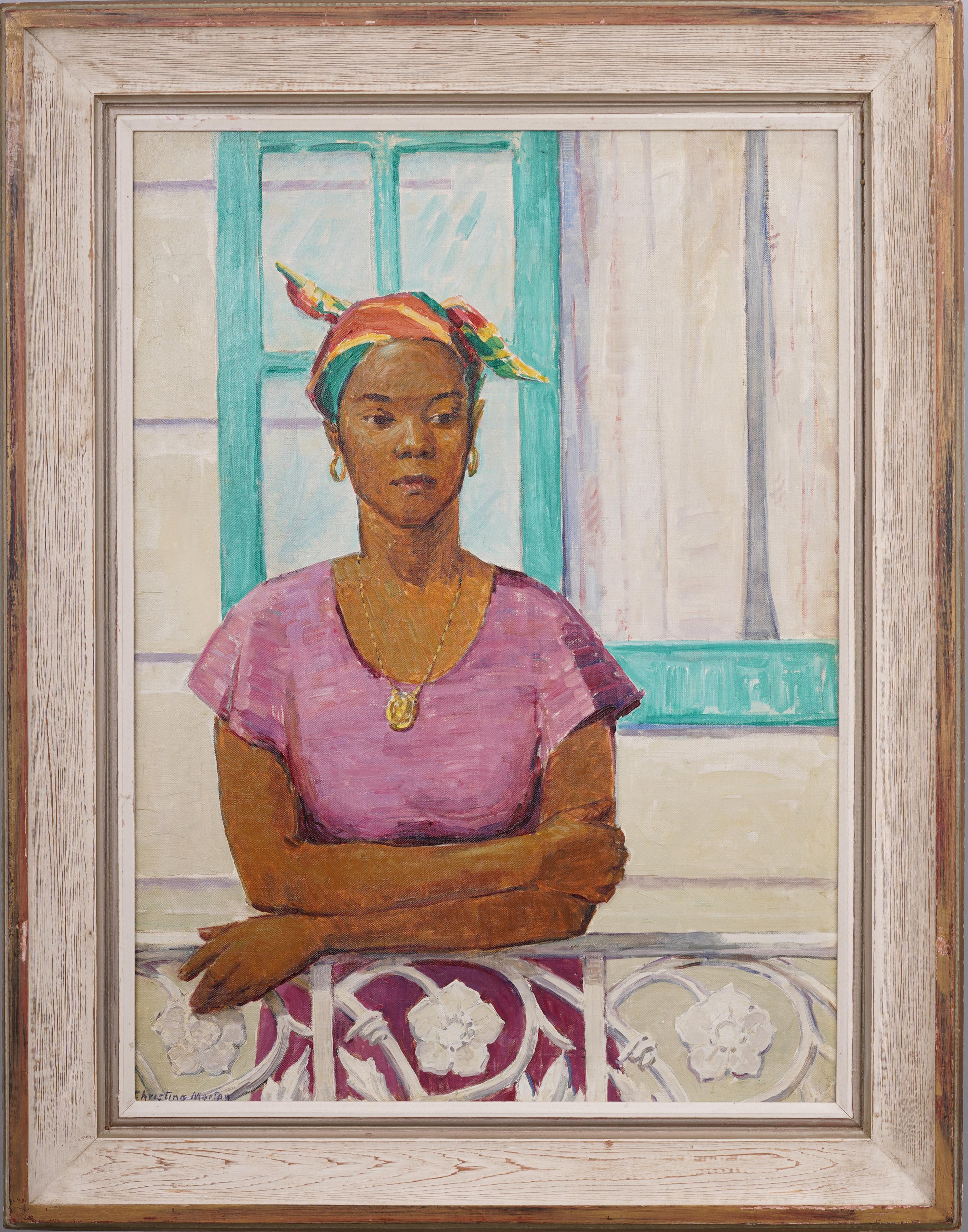Items Similar to Country House Portrait Faringdon House Oxfordshire Grade 1 Listed Oil Painting
Want more images or videos?
Request additional images or videos from the seller
1 of 15
English SchoolCountry House Portrait Faringdon House Oxfordshire Grade 1 Listed Oil Painting
About the Item
Faringdon House, Oxfordshire
English School, mid 20th century
inscribed to label verso
oil on board, framed
framed: 19 x 23 inches
provenance: private collection, England
condition: very good and sound condition
- Creator:English School (1500 - 1550, English)
- Dimensions:Height: 19 in (48.26 cm)Width: 13 in (33.02 cm)
- Medium:
- Movement & Style:
- Period:
- Condition:
- Gallery Location:Cirencester, GB
- Reference Number:1stDibs: LU509313516602

About the Seller
5.0
Platinum Seller
These expertly vetted sellers are 1stDibs' most experienced sellers and are rated highest by our customers.
Established in 1989
1stDibs seller since 2016
3,441 sales on 1stDibs
Typical response time: 2 hours
- ShippingRetrieving quote...Ships From: Cirencester, United Kingdom
- Return PolicyA return for this item may be initiated within 3 days of delivery.
More From This SellerView All
- 1960's French Oil Painting Fashionable Lady in Paris on Bridge River SeineLocated in Cirencester, GloucestershirePausing for Thought Paris School, mid 20th century signed oil on canvas, unframed painting: 25 x 20 inches provenance: private collection, Paris condition: very good and sound conditionCategory
Mid-20th Century Modern Portrait Paintings
MaterialsOil, Canvas
- Sagres II Ship Portrait 20th Century, signed oil paintingBy Louis LetoucheLocated in Cirencester, GloucestershireSagres II, 1937 by Louis Letouche (French 1924-2015) oil painting on linen canvas, stretched over board framed Framed size: 18.25 x 13.75 inches Superb oil painting by the well listed French marine artist Louis Letouche (1924-2015). The painting portrays a Portugese Ship from the early 20th Century, titled: Sagres II. The three-masted ship was launched under the name Albert Leo Schlageter on 30 October 1937 at Blohm & Voss in Hamburg for Nazi Germany's Kriegsmarine. The ship was named after Albert Leo Schlageter, who was executed in 1923 by French forces occupying the Ruhr area. Her first commander was Bernhard Rogge. Sagres is a sister ship of the Gorch Fock, the Horst Wessel, and the Romanian training vessel Mircea. Another sister, Herbert Norkus, was not completed, while Gorch Fock II was built in 1958 by the Germans to replace the ships lost after the war. Following a number of international training voyages, the ship was used as a stationary office ship after the outbreak of World War II and was only put into ocean-going service again in 1944 in the Baltic Sea. On 14 November 1944 she hit a Soviet mine off Sassnitz and had to be towed to port in Swinemünde. Eventually transferred to Flensburg, she was taken over there by the Allies when the war ended and finally confiscated by the United States. In 1948, the U.S. sold her to Brazil for a symbolic price of $5,000 USD.She was towed to Rio de Janeiro where she sailed as a school ship for the Brazilian Navy under the name Guanabara. In 1961, Ambassador Teotónio Pereira of Portugal, who was also a man of the sea...Category
1990s Realist Portrait Paintings
MaterialsOil
- AKOS BIRO (HUNGARIAN 1911-2002) FRENCH EXPRESSIONIST OIL - PORTRAIT YOUNG LADYBy Akos BiroLocated in Cirencester, Gloucestershire"Portrait of a Young Lady" by Akos Biro (Hungarian 1911-2002) signed, oil painting on board, unframed painting: 15.75 x 12.75 inches provenance: the artists estate, France Origina...Category
Mid-20th Century Post-Impressionist Landscape Paintings
MaterialsOil
- SIGNED FRENCH IMPRESSIONIST OIL - ELEGANT LADY LOOKING OUT TO SEA ON CLIFFSLocated in Cirencester, GloucestershireArtist/ School: French School, late 20th century, signed lower corner Title: Lady sitting on cliffs looking out to sea. Medium: oil painting on canvas Size: painting: 15.75 x...Category
Late 20th Century Portrait Paintings
MaterialsOil
- Herzogin Cecilie, signed oil paintingBy Louis LetoucheLocated in Cirencester, GloucestershireHerzogin Cecilie, 1902 by Louis Letouche (French 1924-2015) oil painting on linen canvas, stretched over board framed Framed size: 15 x 21.75 inches Superb oil painting by the well listed French marine artist Louis Letouche (1924-2015). The painting portrays the early 20th Century ship titled: Herzogin Cecilie, 1902. Herzogin Cecilie was built in 1902 by Rickmers Schiffbau AG in Bremerhaven. She was yard number 122 and was launched on 22 April 1902. Completion was on 7 June that year. She was 334 feet 8 inches (102.01 m) long, with a breadth of 46 feet 3 inches (14.10 m) and a draught of 24 feet 2 inches (7.37 m). Herzogin Cecilie was built for Norddeutscher Lloyd Bremen. Unlike other contemporary German merchant sailing ships, the black Flying-P-Liners or the green ships of Rickmers, she was painted in white. She was one of the fastest windjammers ever built: she logged 21 knots at Skagen. The tall ships of the time remained competitive against the steamers only on the longer trade routes: the Chilean nitrate trade, carrying salpeter from Chile to Europe, and the Australian wheat trade, carrying grain from Australia to Europe. Both routes required rounding Cape Horn routinely, and were not well suited for steamers, as coal was in short supply there. Herzogin Cecilie was one of the fastest merchant sailing ships of her time, on a par with the Flying-P-Liners. The trip around Cape Horn from Portland (Oregon) to The Lizard (England) was done in 1903 in only 106 days. At the outbreak of World War I, she was interned by Chile, returning to Germany in 1920, only to be given to France as reparation, and subsequently sold to Gustaf Erikson (24 October 1872 – 15 August 1947) of Finland for £4250. She was homeported at Mariehamn.[2] As the freight rates for salpeter had dropped after the war, Gustaf Erikson sent her to bring grain from Australia. In so-called grain races, several tall ships tried to arrive first in Europe, to sell their cargo for a higher price, as told, for example, in The Great Tea Race of 1866 or The Last Grain Race. Typically, ships were loaded in the Spencer Gulf area, Port Victoria, South Australia or Wallaroo, South Australia, and travelled to Europe, with ports on the British Isles like Queenstown, Ireland or Falmouth, Cornwall being considered as the finish. After "winning" four times prior to 1921, she again won the grain race four times in eleven trips from 1926 to 1936. In 1927, when Herzogin Cecilie covered Port Lincoln (South Australia) –Falmouth, London and won a race against the Swedish ship Beatrice. Alan Villiers was on board, which would result in his book Falmouth for Orders, and later a trip aboard the barque Parma. Wreck of the Herzogin Cecilie in south Devon. With Sven Erikson as her Captain and Elis Karlsson her First Mate, the ship left Port Lincoln in South Australia on 21 January 1935, with a cargo of wheat, and after taking a more southerly route than usual, reached Falmouth for Orders on 18 May making her passage of 86 days the second fastest ever. Herzogin Cecilie was making for Ipswich in dense fog, when, on 25 April 1936, she grounded on Ham Stone Rock and drifted onto the cliffs of Bolt Head on the south Devon coast. After parts of the cargo were unloaded, she was floating again, only to be towed in June 1936 to Starhole (Starehole) Bay at the mouth of the nearby Kingsbridge Estuary near Salcombe, and beached there.On 18 January 1939, the ship capsized and sank. The remains of the ship sit at a depth of 7 metres at 50°12.82′N 3°47.02′W. The timber and brass portholes from the chart room...Category
1990s Realist Portrait Paintings
MaterialsOil
- Woman in Harvest Fields Next to Coastal Seascape Victorian Oil Painting canvasLocated in Cirencester, GloucestershireThe Harvest Workers English School, 19th century oil on canvas, unframed canvas: 24 x 16.5 inches provenance: from a collection in England condition: very good and sound conditionCategory
19th Century Victorian Portrait Paintings
MaterialsOil, Canvas
You May Also Like
- Antique American School WPA Modernist Black Figure Ashcan Dock View Oil PaintingLocated in Buffalo, NYOil on canvas. Framed. Signed.Category
1920s Modern Portrait Paintings
MaterialsCanvas, Oil
- Antique Historic Ashcan Panama Canal Diggers Signed Original Rare Oil PaintingBy Lee Roland WarthenLocated in Buffalo, NYAntique original historical modernist landscape oil painting by Lee Roland Warthen (1893 - 1949) . Oil on canvas, circa 1912. Signed and titled on verso. Image size, 18L x 14H. H...Category
1910s Modern Landscape Paintings
MaterialsCanvas, Oil
- Antique American School Modernist Ballon Portrait Framed Vintage Oil PaintingLocated in Buffalo, NYNicely painted mid century modernist portrait. Framed. Oil on canvas.Category
1960s Modern Portrait Paintings
MaterialsCanvas, Oil
- Mr. and Mrs. Charles and Allison Coolidge (Belmont)Located in Boston, MADated and titled on stretcher: "'37/ Mr + Mrs Chas. Coolidge/ Allison/ -Belmont". In 1929 Molly Luce and her husband, Alan Burroughs, moved from Garden Street on Beacon Hill in Bos...Category
1930s American Modern Landscape Paintings
MaterialsCanvas, Oil
- Antique American Ashcan School New York City Street Scene Kids Playing PaintingLocated in Buffalo, NYAntique American school signed New York City street scene oil painting. Oil on canvas, circa 1920. Signed. Image size, 18L x 24H. Housed in a period modern frame.Category
1920s Modern Portrait Paintings
MaterialsCanvas, Oil
- Large Antique American Bahamian Young Woman Portrait Signed Rare Oil PaintingLocated in Buffalo, NYReally rare and well painted portrait by Christine Walters Martin (1895-1982). Oil on canvas. Framed in a nice modernist molding. Signed. ...Category
1920s Modern Portrait Paintings
MaterialsCanvas, Oil





